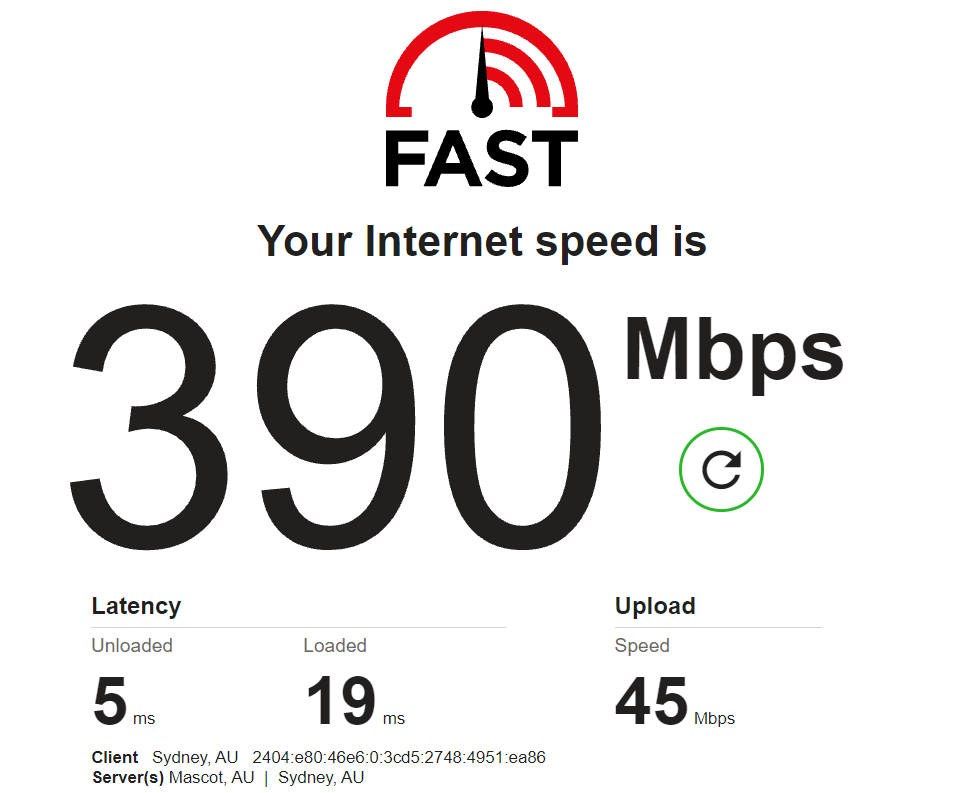While we’ve relied on internet in Australia for years for everything from music, to entertainment, to shopping and for work, the last couple of years have really changed the way we view our home internet connections. They’ve transformed from a nice to have to a must have, and if you’ve been working remotely with video calls, remote desktops and more, you know the importance of fast, reliable internet .. and worse, you know exactly what happens when you don’t have it.
The beauty of the NBN – while we acknowledge there’s plenty not to like about it – is that you can change providers quickly, easily, and usually at no cost. This is a huge change from what people might remember about changing providers on ADSL, where it might take days, require a technician visit, and be generally unpleasant.
If you have had a crap experience with your NBN provider during the last year or two, it’s time to try a new one … and before it’s too late.
Launtel is not a big-name internet provider, and they don’t want to be. They’re not Telstra, Optus, TPG, Vodafone, Aussie Broadband or Superloop. Most people haven’t heard of Launtel and probably never will, and that’s part of the appeal.
For a company that brands itself unabashedly as Australia’s Fastest NBN provider, there’s a big claim .. and from what I’ve seen over the last year or so, it’s a promise they keep. They promise lots of other things, too:
- Activation of NBN connections in around 20 minutes (subject to any delays caused by NBN, which happen occasionally)
- Your own DIY portal – change your plan speed, update your billing, see your CVC utilisation, check your usage (not that it matters, it’s not metered), pause your plan if you’re away, etc. Lots of NBN providers have portals, this one is actually useful.
- Australian support, with genuine friendly voices (on the odd occasion that you actually need to call them), and if you’ve got a technical issue, they’ll gladly spend an hour on the phone helping you to track down issues on your network.
- No slowdowns in peak times … and almost always, they deliver.

One of the biggest issues with big NBN providers – and this includes all the names mentioned earlier – is that in peak times, your internet can slow down quite significantly. Providers are required to quote “typical evening speeds”, but the key word there is typical. You may experience an “atypical” evening frequently, where that gigabit NBN plan you think you’re paying for might be as slow (or slower than) a 100mbps plan.
Having used a range of Launtel plans since around this time last year, I can say that they all perform at full speed pretty much 24/7. I can run network performance tests at 7am, 3pm, 7pm, or 11pm and nearly every time I’m able to max out our 400mbps fibre connection. When I can’t, it still averages well above 250-300 mbps.
One of the most unique selling points though, which I don’t think any other provider offers, is a daily billing system. This means that you pay by the day, instead of by the month (or some other billing period) and it has an added bonus – you can change your plan speed every day if you need, so you only pay for what you’re going to use. Need fast speed during the week? Easy, activate a #FastAF plan for weekdays. Not home on the weekend because you can leave the house now? Dial it back to a 25/5 or 50/20 plan (for half the price) to keep your smart home gear online.
There’s other cool features too (mainly for nerds like me), such as native IPV6 for your entire network, the option to select a static IP if you need one, and you can even change the reverse DNS PTR entry if you really want (helpful if you’re hosting a mail server, as we do).

So what does Launtel cost?
- NBN 25/5 – $1.99 per day (or around $59.70 per month)
- NBN 50/20 – $2.28 per day (or around $68.40 per month)
- NBN Home Fast (100/20) – $2.90 per day (or $87 per month)
- NBN 100/40 (which most other providers are reluctant to sell anymore) – $3.25 per day (or $97.50 per month)
- NBN Home SuperFast (250/25) – $3.80 per day ($114 per month)
- NBN #NQFastAF (400/50) – $4.10 per day ($123 per month)
- NBN #FastAF (1000/50) – $4.60 per day ($138 per month)
- NBN 250/100 – $5.50 per day ($165 per month)
- NBN 500/200 – $8.00 per day ($240 per month)
- NBN #FastAF-400 (1000/400) – $10 per day (or $300 per month)
Not all of these plans will be available everywhere, depending on whether your local NBN Connectivity Service Area (CSA) is a premium direct one (i.e. served by Launtel’s own backhaul), a non-premium CSA (backhaul by others), or whether there’s enough capacity in your CSA (e.g. Asquith Depot has 500mb capacity, so gigabit plans aren’t offered).
Some of these plans do get a bit expensive, especially once you get to the pointy end … but virtually no household needs speeds faster than 250mbps, unless you’re moving a LOT of data very frequently. Truth be told, we don’t really need the 400mbps plan we use.

What if you want to try Launtel?
Well, there’s some good news here.
For starters, you can enjoy a 7-day free trial of Launtel’s services for absolutely no cost whatsoever, and that’s on any plan speed you choose – from NBN 25 all the way up to NBN #Fast AF (1000/50) plan. Do note, though, there are some connection times and locations where the free trial may not be available – you’ll be advised when you go to sign-up.
After the 7-day free trial, you either add a billing method and stay on, or your connection is paused and you can go elsewhere.
The other good news is that plans specific to your location may have a six month discount on the normal price. This is not reflected in the above quoted prices as they can be tech type / location / service specific.
The last bit is if you sign up with a referral code (here’s ours, by the way) you get $25 credit when you first add a billing method to your account (i.e. after the free trial), and we also receive a referral bonus.
So, if your NBN provider has let you down, give Launtel a try. You won’t be disappointed.
This is a genuine recommendation from us, not a paid advertorial. Chris has been a Launtel customer for 12 months, has tried many different speed tiers and has been connected across two connection types (FTTN and FTTP). He hasn’t found a better NBN provider, and yes, he’s tried many.




